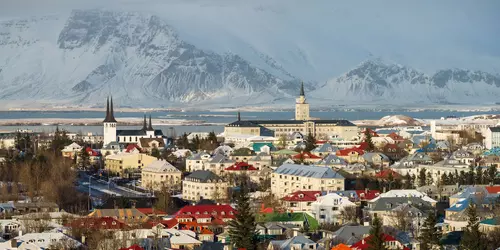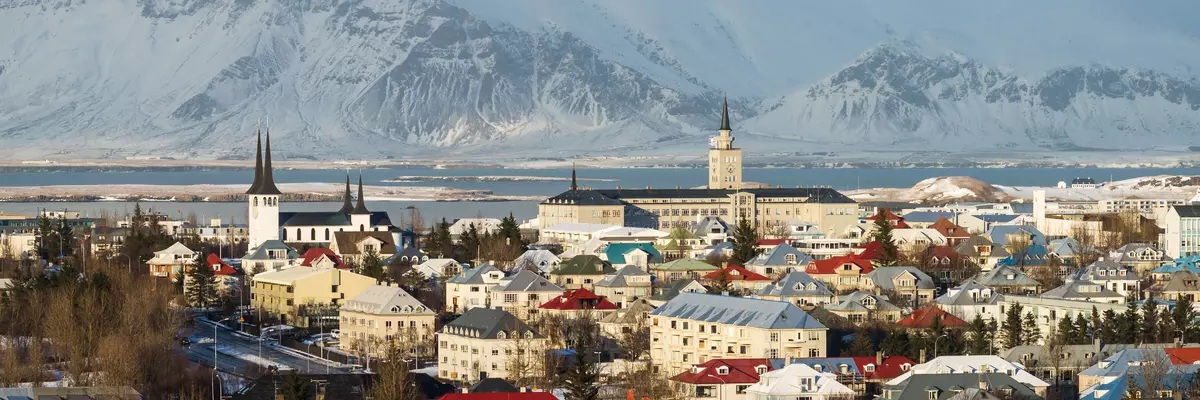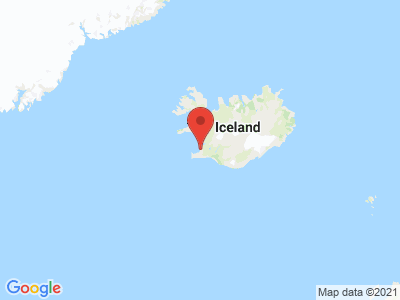Climate Table Reykjavík
Jan | Feb | Mar | Apr | May | Jun | Jul | Aug | Sep | Oct | Nov | Dec | |
|---|---|---|---|---|---|---|---|---|---|---|---|---|
| Max. Temperature | 2° | 3° | 4° | 6° | 10° | 12° | 14° | 14° | 11° | 7° | 4° | 2° |
| Min. Temperature | -2° | -2° | -1° | 1° | 4° | 7° | 9° | 8° | 6° | 3° | 0° | -2° |
| Sun Hours | 1 | 2 | 4 | 5 | 6 | 6 | 6 | 5 | 4 | 2 | 1 | 0 |
| Water Temperature | 4° | 4° | 4° | 4° | 4° | 7° | 7° | 7° | 6° | 6° | 6° | 4° |
| Rain Days | 20 | 17 | 18 | 18 | 16 | 15 | 15 | 16 | 19 | 21 | 18 | 20 |
The climate year of Reykjavík
Reykjavík is the capital of Iceland, the country without beaches and forest, but with volcanoes, glaciers, geysers, ponies and natural thermal pools. Iceland consists of a harsh landscape, with rapidly changing winds several times a day, but also with sunshine. The world's northernmost capital (269 kilometers south of the Arctic Circle) was covered by glaciers until 10,000 years ago, part of which was still below the water line. At the end of the Ice Age, today's Öskjuhlíð and Skólavörðuholt hills were islands in the sea. The warm Gulf Stream and the Irminger Current ensure that Iceland does not get colder than -2°C in winter and that temperatures of about 15°C - 20°C are reached in summer. The highest temperature was measured in August 2004 with 24.8°C and the lowest in January 1918 with -24.5°C. So close to the Arctic Circle Reykjavik has only 4 - 5 hours of sunlight in winter, but in summer the night becomes day.
General information about Reykjavík
Reykjavík has a lot to offer to guests who are interested in history. They will surely be amazed by the old buildings from the medieval times and the relics of the Vikings. Those interested in art and photography will find street art, sculptures and statues and contrasts such as old houses with colorful roofs next to new buildings among wide green spaces. Pulsating life in the city center and contemplative places alternate. The city is increasingly becoming a cultural city and offers galleries, museums, boutiques and festivals in large numbers.
A good overview of the city can be enjoyed from the steeple of Hallgrims Church and from the viewing platform from the hill Öskjuhlid. Activities in the city area are quad tours or whale watching in Faxaflói Bay.
Tourism Reykjavík
Very impressive are the auroras in winter when the night sky is clear and cloudless. Nitrogen and oxygen atoms in the atmosphere meet charged particles from the earth's magnetic atmosphere and magnificent images in green, blue and red are created in the sky. A magnificent spectacle of nature!
The best time for hiking or trekking is from the end of June to the beginning of August, because in June and July there is the least precipitation and the days are the longest. Also, June and July is the time of flowering plants and the temperatures go up to 20°C.
Nevertheless, snowfall and impassable roads can still be expected in the north in July. High season is early July with mid-August, but also in September is often still good weather. Inland, however, it can snow as early as September and buses run less frequently then. The winter Icelandic landscape is good to enjoy in February, March and April, because then there is a lot of snow and it is not dark for so long. Precipitation (0.1 mm and more) falls on average 148 days a year. The precipitation days in October are the highest, in June and July the lowest. Whale watching is possible between the beginning of June and the end of August, even with bus tours. Blue whales can be seen between the end of June and the beginning of August.


